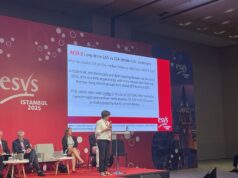 An international panel of clinical researchers has published a report in the journal Stroke in which they advocate “immediate change” regarding treatment protocols for intracranial haemorrhage (ICH), citing the fact that haemorrhagic stroke management “lags far behind” that seen in more common ischaemic strokes.
An international panel of clinical researchers has published a report in the journal Stroke in which they advocate “immediate change” regarding treatment protocols for intracranial haemorrhage (ICH), citing the fact that haemorrhagic stroke management “lags far behind” that seen in more common ischaemic strokes.
ICH is caused by the spontaneous rupture of a small artery in the brain that results in bleeding into the brain. And, although ICH accounts for only 15–20% of all strokes, it is “by far the deadliest and most disabling form of stroke”, with a mortality rate of approximately 30%. That is according to a press release announcing the panel’s recent publication.
The same release details that, while a highly standardised and optimised workflow has been adopted worldwide for treating acute ischaemic stroke, no such time-based emergency protocols are in widespread use for ICH.
Ischaemic stroke treatment places an emphasis on the restoration of blood flow as quickly as possible via clot-busting medications or a mechanical thrombectomy procedure to remove the clot. As such, stroke centres employ standardised protocols, and are required to report how many patients receive reperfusion therapy, how quickly it is given, and how often it is successful.
However—according to the present publication in Stroke—no such quality measures are universally applied for ICH. The paper, entitled “Code ICH: A call to action”, is intended to help correct this disparity. It reviews the latest scientific evidence supporting the effectiveness of various strategies for treating ICH, including lowering of elevated blood pressure, reversal of blood thinners, treatment for brain swelling, and surgical haematoma removal.
Based on the current evidence, the authors of the paper advocate for the “immediate and widespread adoption” of a ‘care bundle’ designed to reduce blood pressure and reverse the effects of blood thinners within one hour of arrival to the hospital.
“Neurologists typically cite the phrase ‘time is brain’ to educate the public about the importance of acting quickly when someone is suspected of having a stroke,” said Stephan Mayer (New York Medical College, Valhalla, USA), co-senior author of the paper. “The fact of the matter is that this principle is unevenly applied. Hospitals are required to treat ischaemic stroke urgently and report their performance, but are under no obligation to do the same for ICH—even though it’s a more deadly disease. This disconnect has to change.”
“ICH is an emergency and should be treated as one,” added Joshua Goldstein (Harvard Medical School, Boston, USA), co-senior author of the paper. “We know that, during the first hours after a brain haemorrhage, there is active bleeding that causes continued damage in up to 40% of patients. Stroke centres regularly treat hypertension and reverse anticoagulation, but there are currently no standards or requirements to give these treatments as quickly as possible.”
“Care bundles that emphasise ultra-early intervention for ICH have been studied; they dramatically reduce treatment times and improve outcome,” noted Qi Li (The Second Affiliated Hospital of Anhui Medical University, Hefei, China), first author of the paper. “Evidence-based guidelines from professional organisations are used to codify best practices, but they can take years to develop. We wrote this consensus statement because our patients can’t wait that long. ICH is a life and death situation, and the time to act is now.”
The author group includes 18 experts in ICH care representing the USA, UK, Canada, China, Australia, Italy, and Germany.









